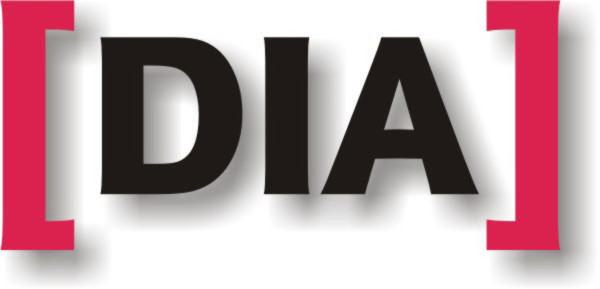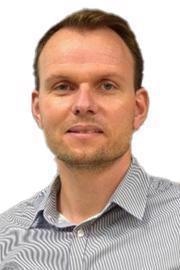In this interview, Philip Mörke (CEO at Fink & Partner), and Christoph Verrieth (product manager at SPECTRO), talk to AZoM about the relationship between [FP]-LIMS and OES analysis.
To begin, can you give us a brief introduction into Fink & Partner and the work you do?
Philip Mörke: Fink & Partner GmbH is a German company for software development founded in 1992 and unified under this name with Fink Software GmbH in 2019. Our software solution is called [FP]-LIMS, and it is a module-based solution for the laboratory.
I am the CEO at Fink & Partner's, and I have many other tasks next to the management ones: I typically coordinate the sales and marketing department for all our business units.
How/why was Fink & Partner established?
Philip Mörke: Peter Niemann and Hans-Jochen Fink co-founded Fink & Partner GmbH in 1992. The inspiration for the idea and afterward for a concrete business plan is strongly related to Spectro Analytical Instruments. Peter Niemann, Managing Director in the headquarters in Goch, used to work for SPECTRO Analytical Instruments, where he had the chance to deeply learn the functions and properties of the measurement instruments and the related software's installation those processes need.
Fink & Partner has been developing and selling LIMS software solutions for the laboratory since 1992. Mr. Mörke, we would be very curious to know more about LIMS and what it is designed for.
Philip Mörke: LIMS means Laboratory Information Management System and is a software solution designed to support complicated lab workflows. LIMS software could be defined as a specific IT application in the form of a database to support laboratory operations. In specific, LIMS's tasks concern data and sample tracking as well as merging and archiving. LIMS is a flexible solution, and more specific definitions about this IT application depend on the individualistic use in each laboratory. [FP]-LIMS's peculiarities concern the recording and transfer of measurement data as well as the IT consolidation.
Can you give us an introduction in [FP]-LIMS?
Philip Mörke: [FP]-LIMS is a standard LIMS solution adapted to different laboratories and belongs to IoT technologies' upcoming standards. Our software solution is a product that can adapt to the Fourth Industrial Revolution since it has the scope to digitalize the lab workflows. Furthermore, [FP]-LIMS is designed to support quality management processes to improve quality and reduce costs.
[FP]-LIMS bases on modules that have been developed further over the years. The analysis management module is compulsory for using [FP]-LIMS: it is designed to process analyses, filter, select, export data, and shows the device interfaces. It also includes base tables to increase the quality of the laboratory processes. Other essential modules are recipe management, ICP, input dialogue, and Web interface.
Furthermore, Fink & Partner introduced the quality inspection module and the workflow management due to the growing industries' upcoming needs for non-standardized sample structures. [FP]-LIMS finally disposes of a module supporting communication with upper-level systems such as ERP and PCS. Since 2020 [FP]-LIMS has the certified interface to communicate with SAP S/4HANA®.
Fink & Partner is now developing a new project concerning blockchain technology and data security to avoid data falsification.
What are its specific functions, and how does [FP]-LIMS distinguish from other LIMS software solutions?
Philip Mörke: [FP]-LIMS has a sophisticated modular structure that is crucial in improving laboratories' workflows. This enables [FP]-LIMS the compatibility with numerous measurements methods, such as optical emission spectrometry (OES), x-ray fluorescence analysis (XRF), mass spectrometry (ICP-MS), tensile and hardness test.
[FP]-LIMS is a customizable software solution that offers high-quality standards. Thanks to its flexibility and reliability, it is possible to combine the modules according to one's lab workflows. [FP]-LIMS is standard software that can be adapted to the most specific requests from our clients. For example, Fink & Partner's expertise is to understand the customers' needs, even if they operate in different industries. Thus, [FP]-LIMS can perfectly fit the chemical, foundry, metallurgy, and recycling industry.
[FP]-LIMS is also essential for the "communication" between devices, which is called bidirectional communication: the software sends the disposal decision to the ERP system according to pre-configured rules and stores the data to keep their integrity. The customers also can access the data through [FP]-LIMS anytime they need it. For this reason, we can consider [FP]-LIMS as the bridge to upper-level systems, like ERP and SAP.
The previous version of [FP]-LIMS was called [DIA], DIA2000, DIA2000SE, [DIA] Light. Can you tell us about [DIA] 's success and why it was a crucial upgrade for laboratory workflows?
Philip Mörke: Yes, absolutely. [DIA] has been being supplied by SPECTRO with its laboratory measurement instruments. [DIA] started to revolutionize the laboratories' workflows since it is intuitive, easy to use, and reliable due to the possibility of recording and archiving data.

When it comes to OES spectrometry, what are some of the various OES devices offered by SPECTRO?
Christoph Verrieth: The flagship SPECTROLAB S leads today’s most comprehensive suite of advanced arc/spark metal analyzers. These include the midrange SPECTROMAXx stationary metal analyzer, the entry-level SPECTROCHECK stationary metal analyzer, the SPECTROTEST mobile metal analyzer, and the SPECTROPORT portable metal analyzer. Whatever the product, SPECTRO’s more than 40 years of experience in elemental analysis and an unparalleled record of technological innovation ensure the best results in the business.
When it comes to OES, what are some of its applications?
Christoph Verrieth: The most important application for spark OES is iron and steel. Followed by Aluminum, Copper, and Nickel. Due to the fact that materials and their requirements are changing fast, SPECTRO is in close contact with various producers of these materials. Nowadays, applications such as additive manufacturing are becoming more and more important and exciting.
[DIA] used to be equipped with the spark analyzer software and installed on SPECTROLAB and SPECTROMAXx. What can you tell us about the role that [DIA] plays in combination with the spark analyzer software?
Philip Mörke: SPECTRO's measurement instruments work in a very harmonic way with [DIA] – and of course, vice versa. [DIA] fulfills OES analysis's standards, requirements, and the measurement instruments involved in such a complex operation. OES is an analytical technique used to determine the chemical composition of metal alloys. It is clear that such an analysis involves a considerable amount of data and therefore requires support by proper laboratory software. This is why [DIA] plays an essential role in OES.
Christoph Verrieth: Most of the instrument suppliers offer their own archive systems. However, when data from various measurement technologies or suppliers need to be merged, laboratory software needs to take over this job. This is what [DIA] is precisely doing.
Can you tell us a bit more about [FP]-LIMS and what part this plays in terms of OES?
Philip Mörke: [FP]-LIMS is the new generation of [DIA]. They work the same, are very intuitive, easy to use, and very reliable when merging, detecting, and archiving a considerable amount of data and samples.
How does OES analysis upgrade from installing [DIA] or the latest version, [FP]-LIMS?
Philip Mörke: The difference between [DIA] and [FP]-LIMS is substantial, and that [DIA] does not work on Windows 10. As we already said, [FP]-LIMS is the newest version with an all-new development.
Christoph Verrieth: Customers get the ability to prepare, evaluate, and merge analysis data from various measurement techniques and suppliers.
As we already said, [FP]-LIMS has a modular structure that can be adapted to the customers’ needs. What are the modules that can make a difference for a successful OES analysis?
Philip Mörke: Mandatory modules for accurate optical emission spectrometry are quality inspection and workflows management. Let us have a more in-depth look at these two modules:
The [FP]-LIMS quality inspection module is especially indicated for laboratories with a wide range of settings and non-standardized sample structures. The scope of using this module is to create sophisticated individualistic tests, set any number of samples, and adjust the analysis at any time. Barcode labels for the samples provide the right overview and correct assignment. The job server can also automate the processes in quality inspection management.
The Workflow Management module is designed to manage and control all workflows within [FP]-LIMS and is easy to use thanks to its intuitive design.
Christoph Verrieth: The [FP]-LIMS software can work like a Master database for all connected instruments. All data like grade libraries can be managed in this system and automatically transferred to their connected systems. That makes our customer’s lives much easier. There is only one system that needs to be maintained, which saves a lot of time and prevents wrong entries.
You work closely with SPECTRO – can you tell us about this company and what they do?
Philip Mörke: We replenish our work: SPECTRO Analytical Instruments creates instrument hardware and operating software, whereas we create the software for data collection, preparation / merging, administration, and evaluation.
When it comes to your working relationship with Spectro, how did this come about, and what does it involve?
Philip Mörke: We have been in a partnership for many years. We have been developing and improving our solutions together: having both hardware and software, including strong cooperation, makes us competitive on the market. Mr. Niemann and Mr. Fink's business idea developed in 1992 is also deeply rooted in SPECTRO's structures and concepts.
About Philip Mörke

My career started with training as an IT specialist; however, that was just the beginning: I continued extending my practice and knowledge in this area. In fact, after a few years, I became an IT project manager. The following step forward I took was becoming an active member of the sales team.
At Fink & Partner's, I was firstly sales director, and after a couple of years, I was offered the possibility to become a chief executive officer.
About Christoph Verrieth

My career started with an apprenticeship as an electronics technician at SPECTRO. Through further training as an electrical engineer, I was offered the opportunity to take over as deputy head of the AMETEK calibration laboratory in Meerbusch.
After about two years, there was the opportunity to take over the management of the Product Support Arc/Spark group at SPECTRO, which of course, I was happy to take on. I was able to gain a lot of experience through various interim jobs, such as Global Service Manager, and have been the Product Manager for stationary metal analyzers at SPECTRO since June 2019.
Disclaimer: The views expressed here are those of the interviewee and do not necessarily represent the views of AZoM.com Limited (T/A) AZoNetwork, the owner and operator of this website. This disclaimer forms part of the Terms and Conditions of use of this website.